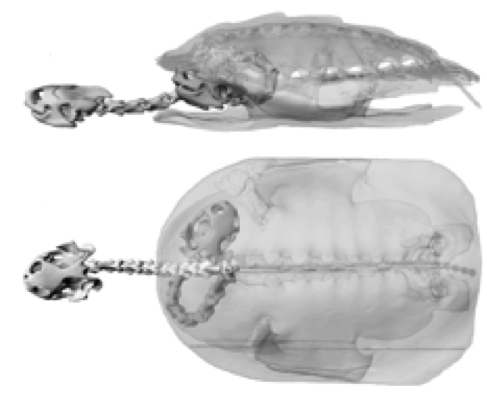Methods
Summary
I will employ state-of-the-art imaging techniques to describe: 1) skeletal components inside the shell (neck vertebrae and shoulder blade); 2) muscle attachments and contraction; 3) shell-closure based on x-ray 3D reconstructions. Specifically, I will create and compare 3D and 2D reconstructions across species in order to define key differences that contribute to shell-closure in box turtles. This work may begin as early as the spring of 2017 (pending institutional approval).Below is an example of 3D reconstruction created by my project collaborator, Ingmar Werneburg (adapted from Werneburg 2015). 
Challenges
This work involves live animals, raising challenges about animal care and use. Our protocols have been approved by an institutional animal ethic committee. Even so, we plan on using the minimal number of animals possible (1 per species) to minimise any potential stress caused during experimental procedures. In addition, we also plan on using museum specimens in comparative anatomical analyses.
Pre Analysis Plan
We aim to test an anatomical hypothetical model that describes shell-closure as a pulley and lever system. This hypothesis will be tested qualitatively by examining and describing the motion and morphology of muscles and bones situated within the shell.
Protocols
This project has not yet shared any protocols.